The document discusses the architecture and best practices of REST (Representational State Transfer) APIs, emphasizing service communication, common problems, and effective design principles. It covers various topics including state of the art communication methods, potential issues with current practices, and offers guidelines on URLs, headers, and error management. Additionally, it provides examples of HTTP methods and emphasizes the importance of user-friendly API design and documentation.

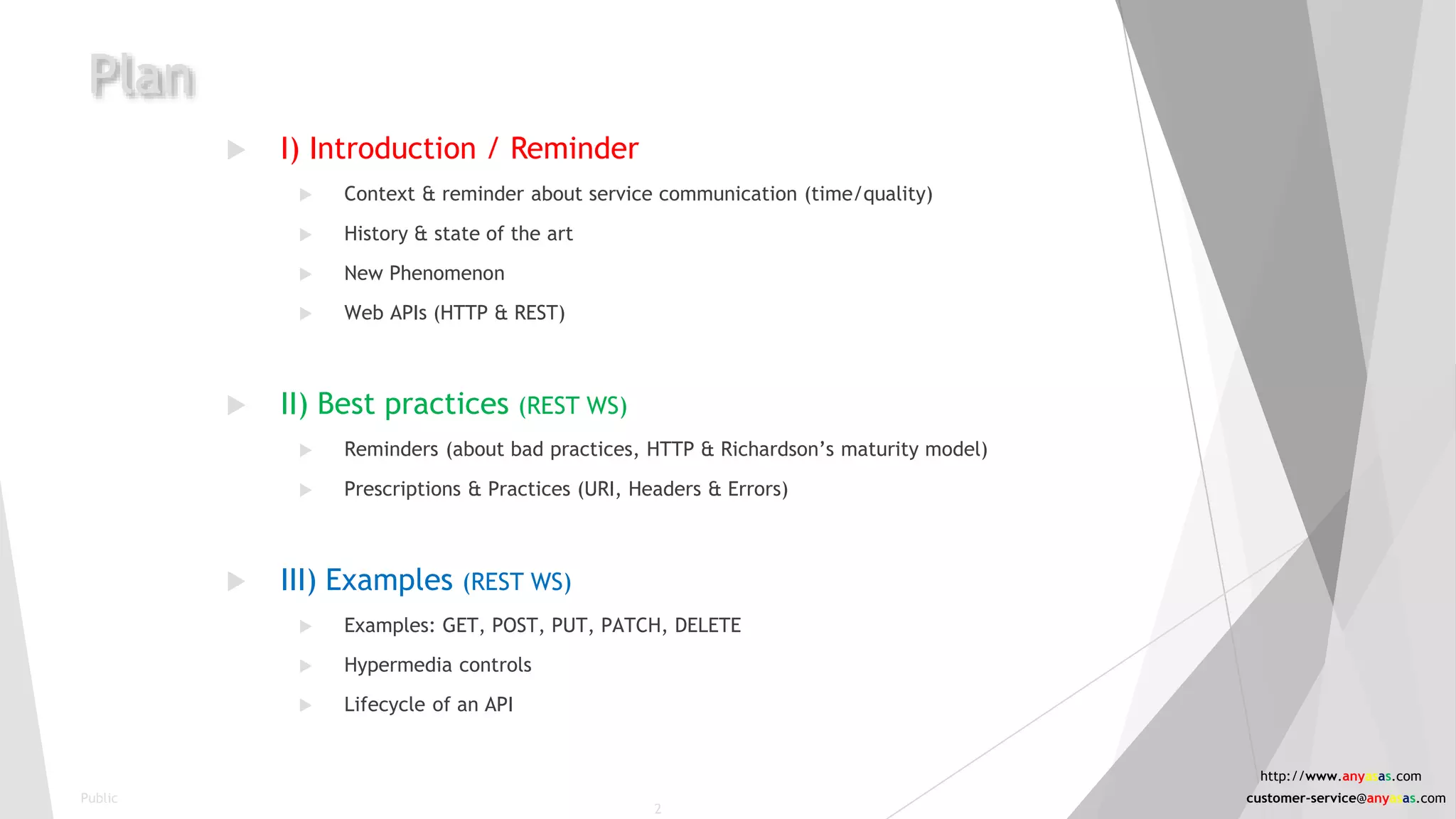
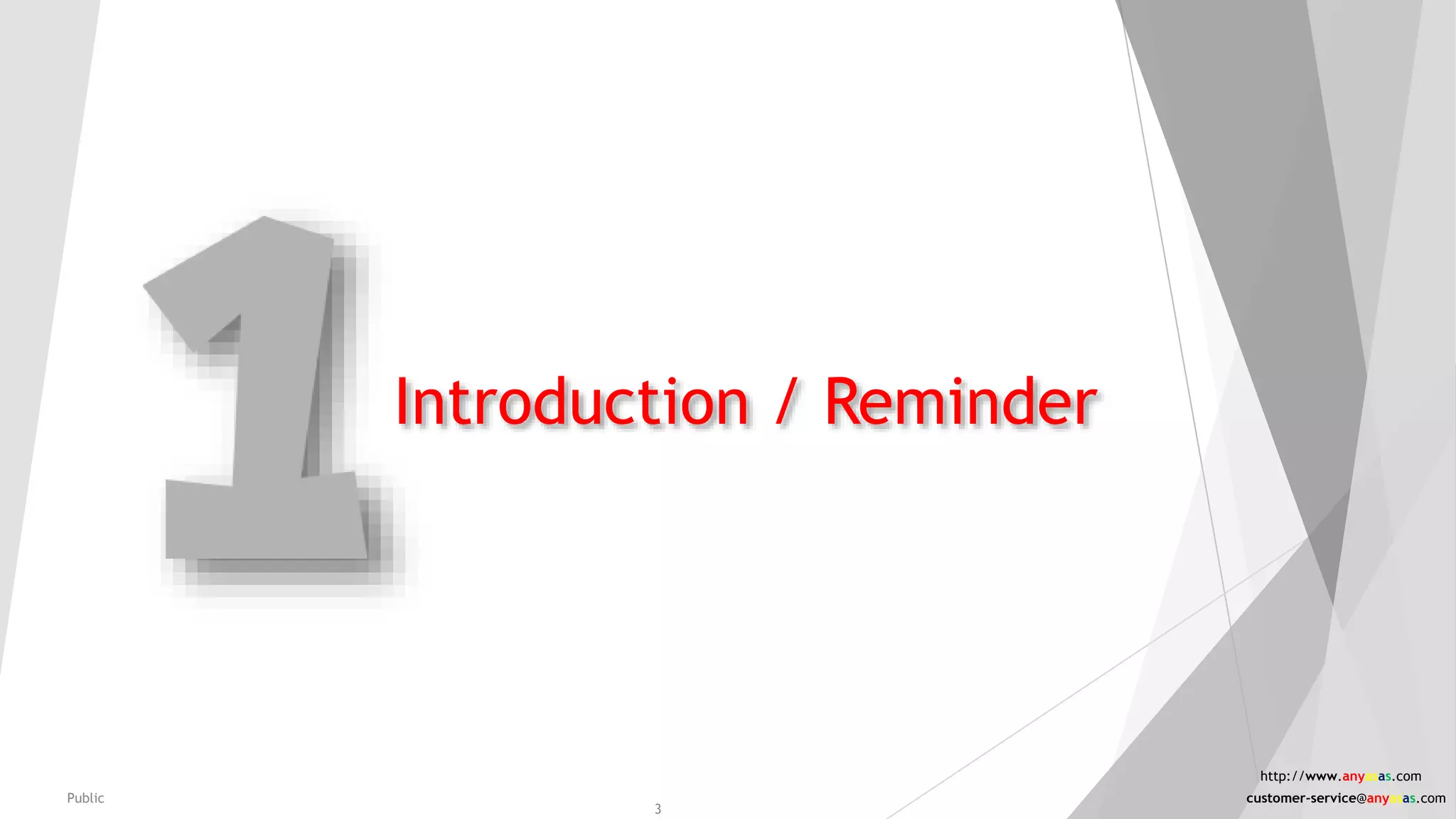
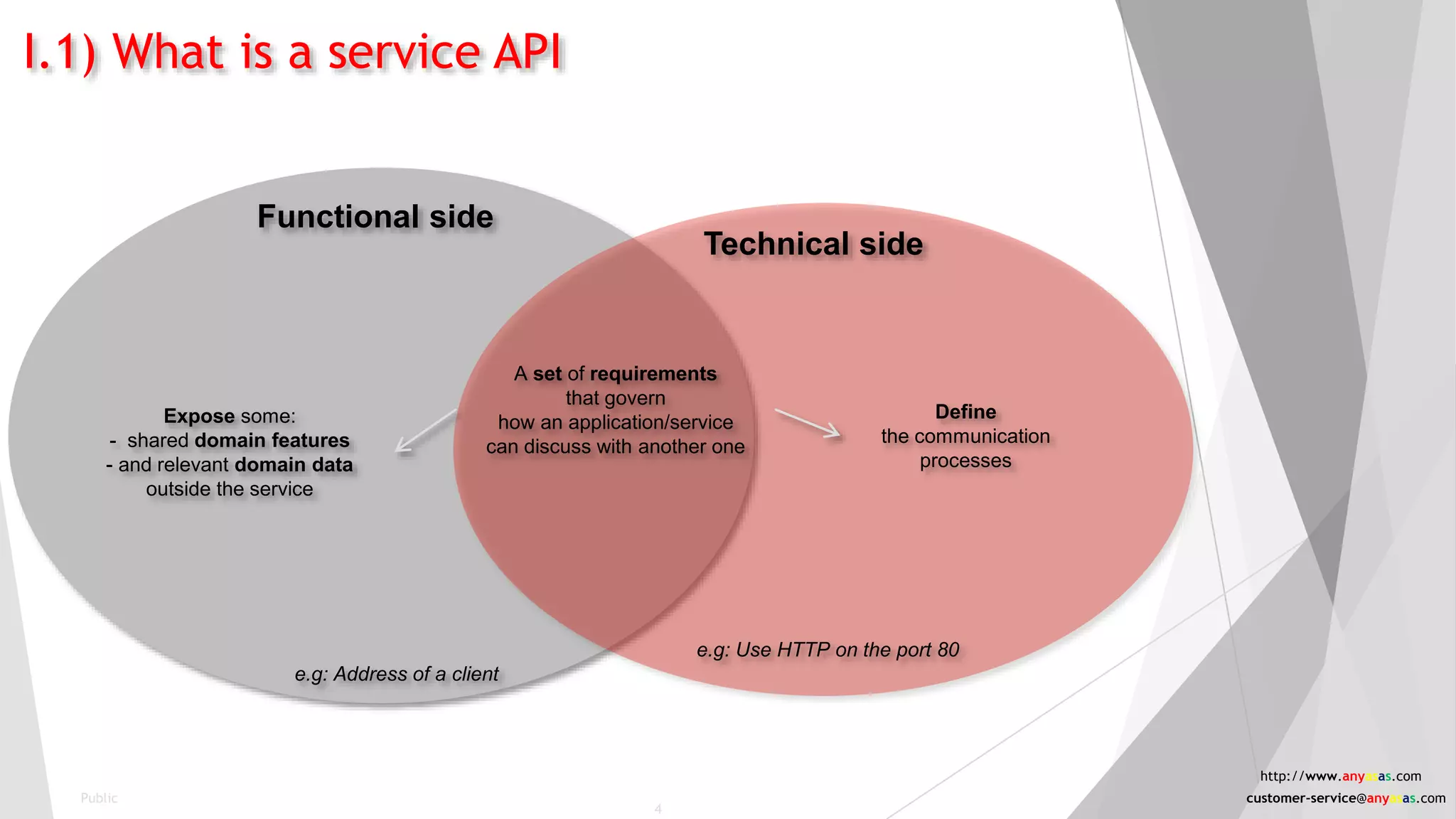
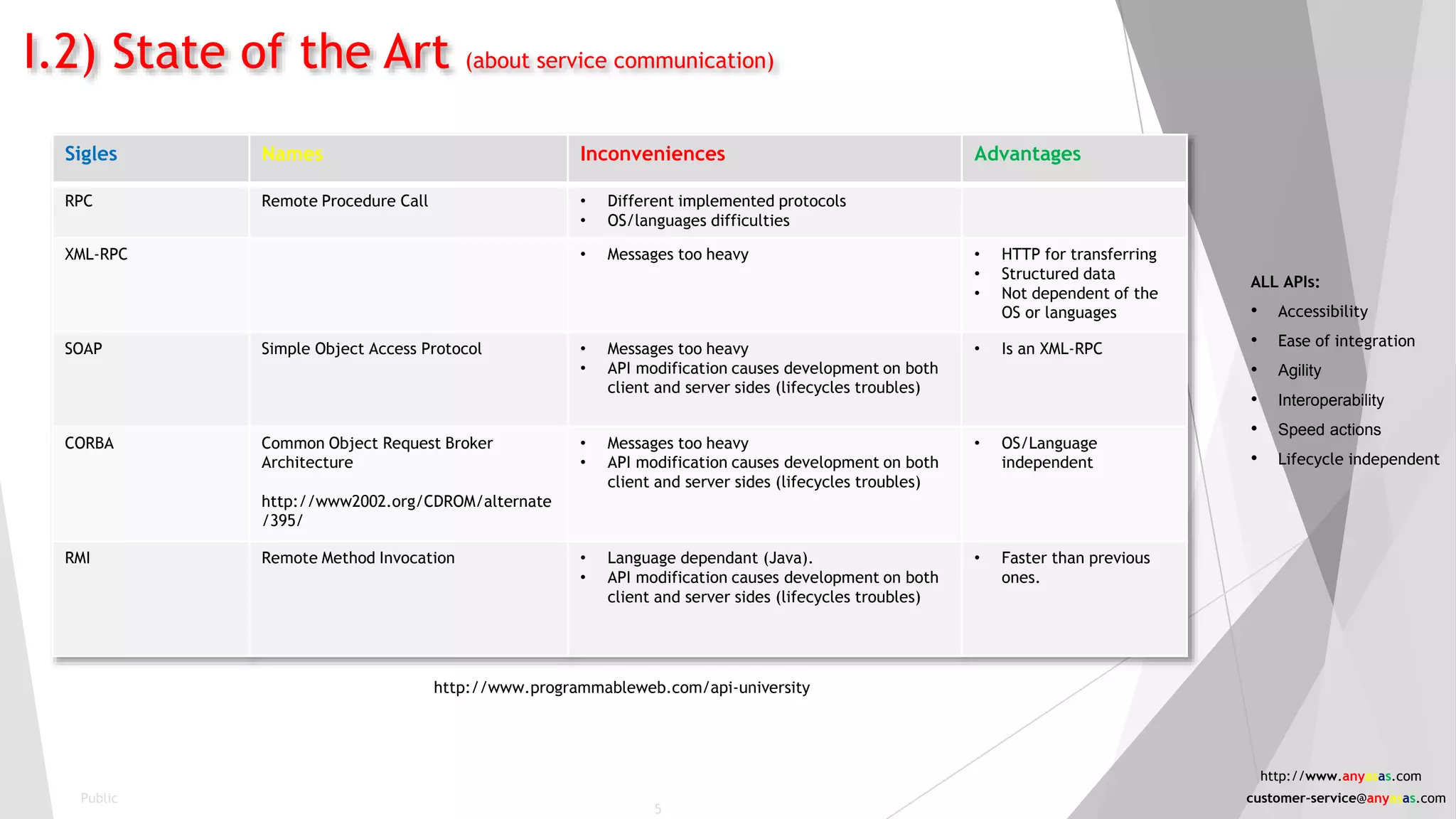
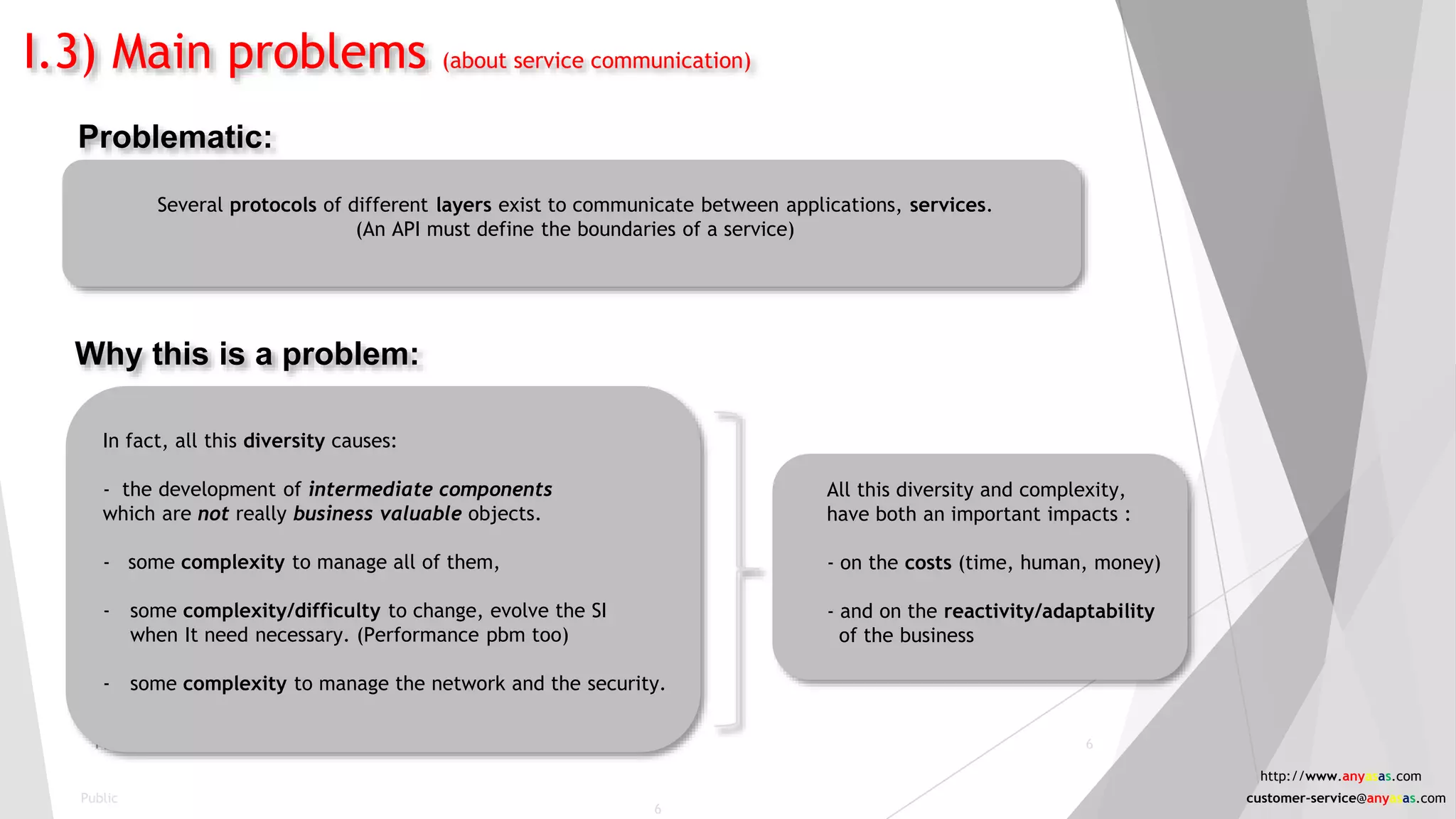
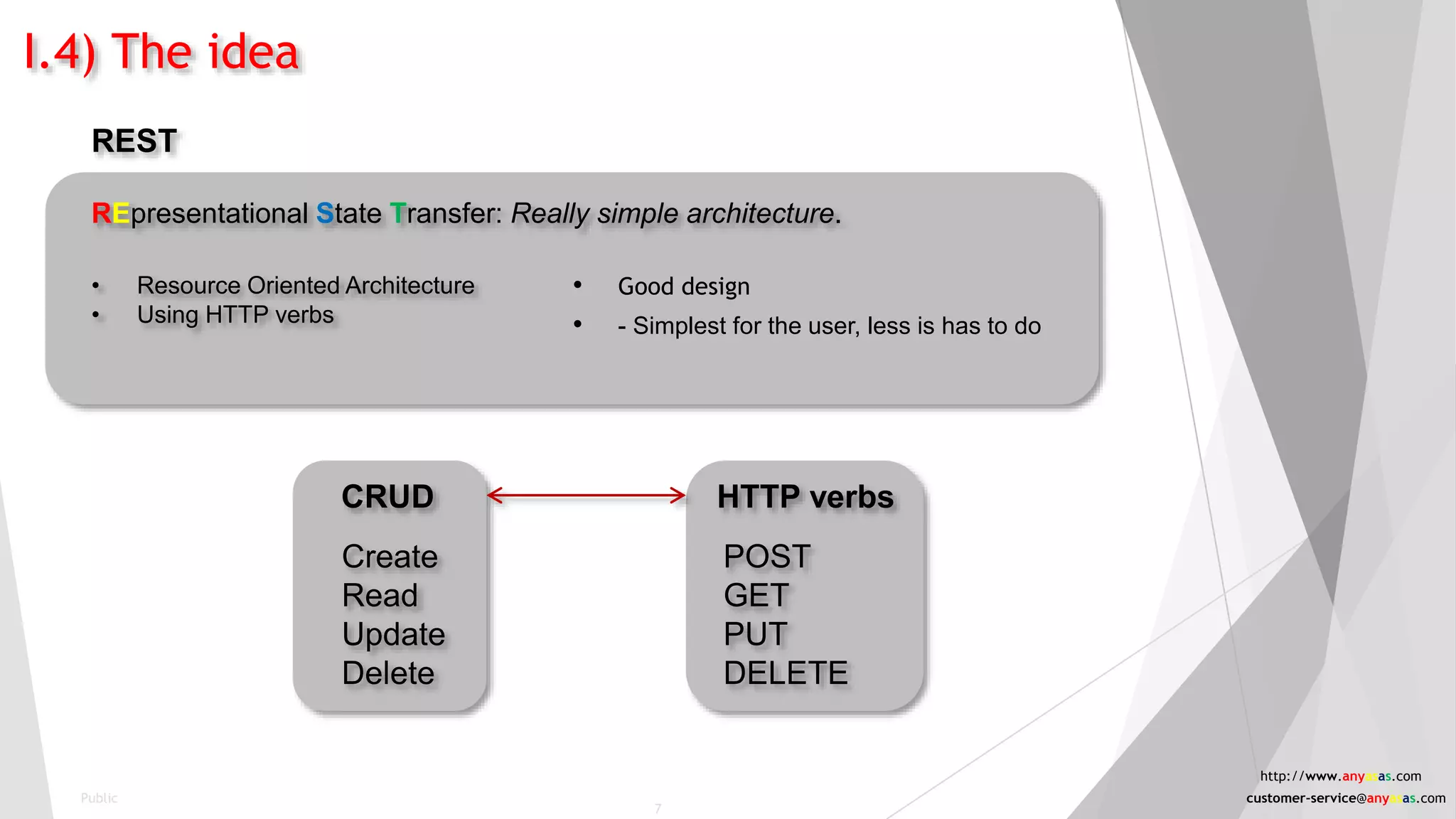
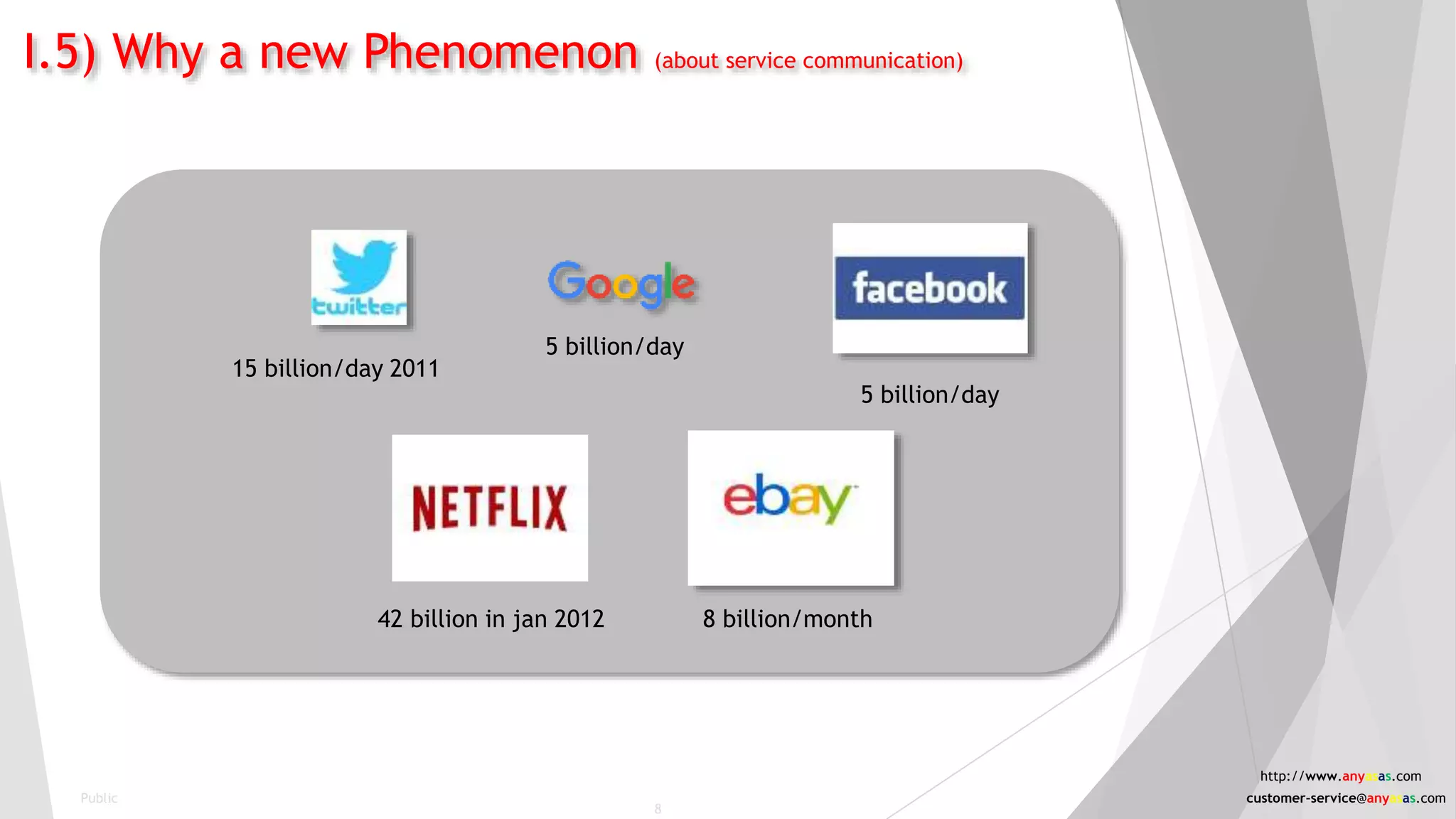
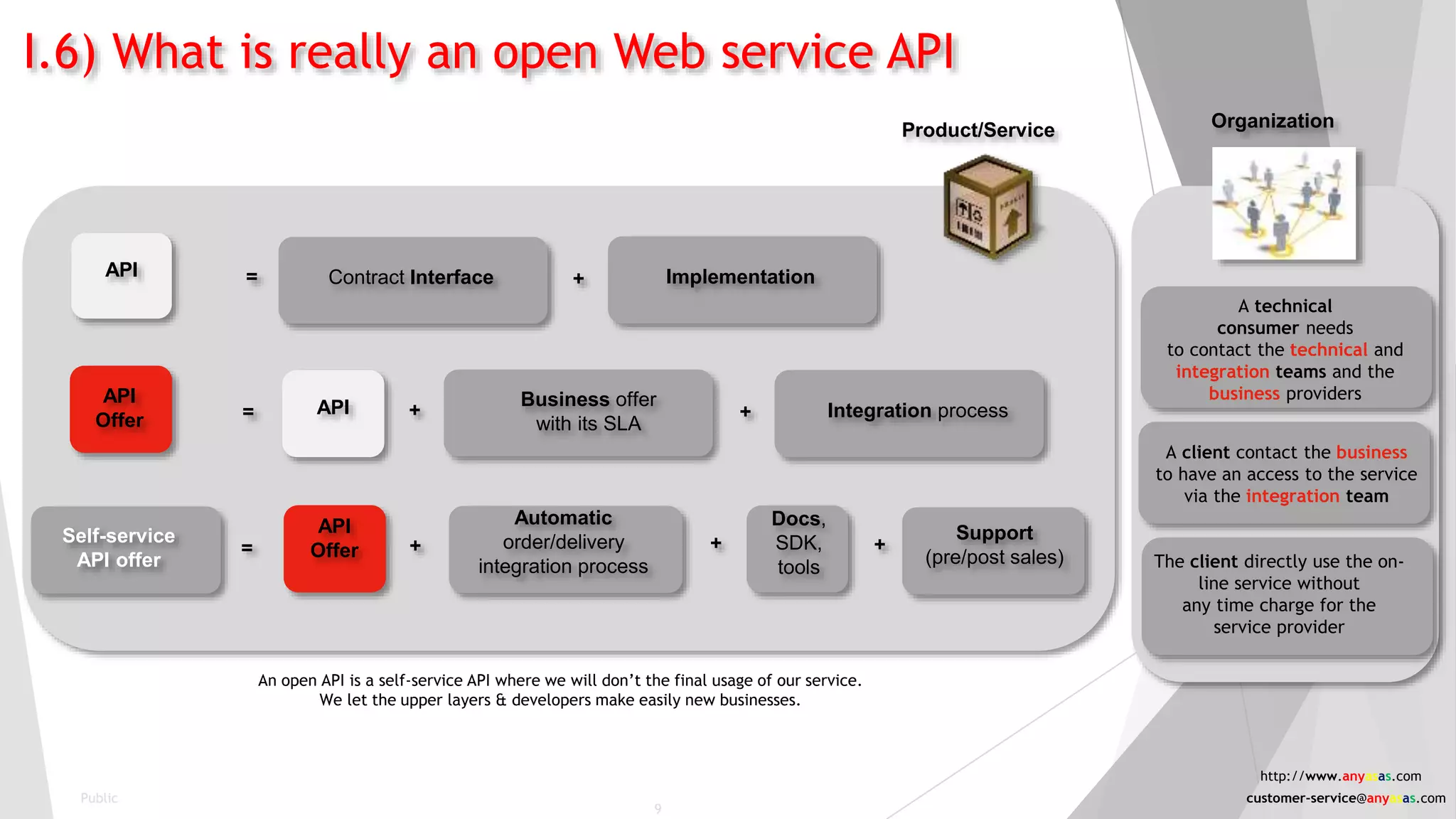
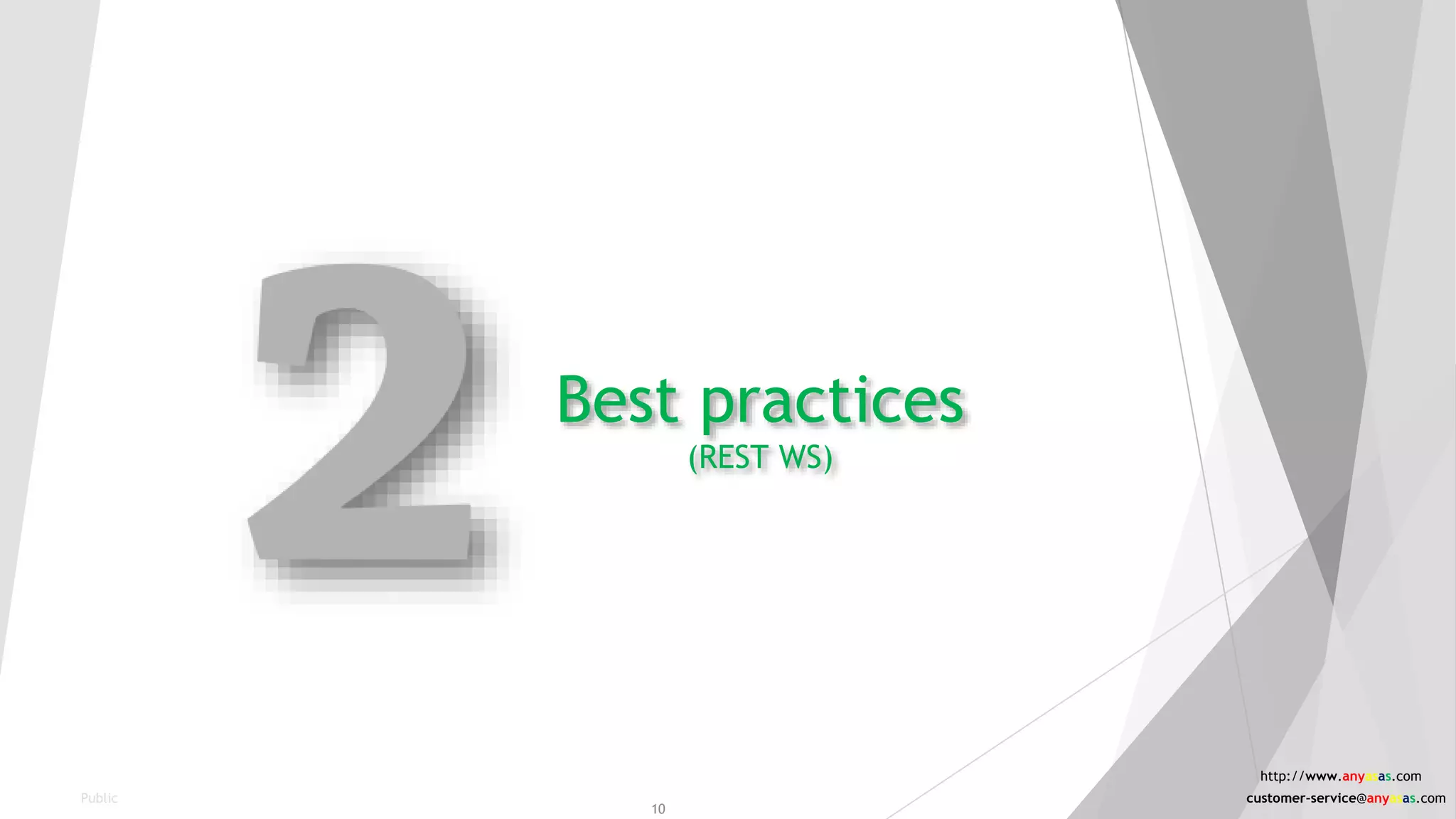
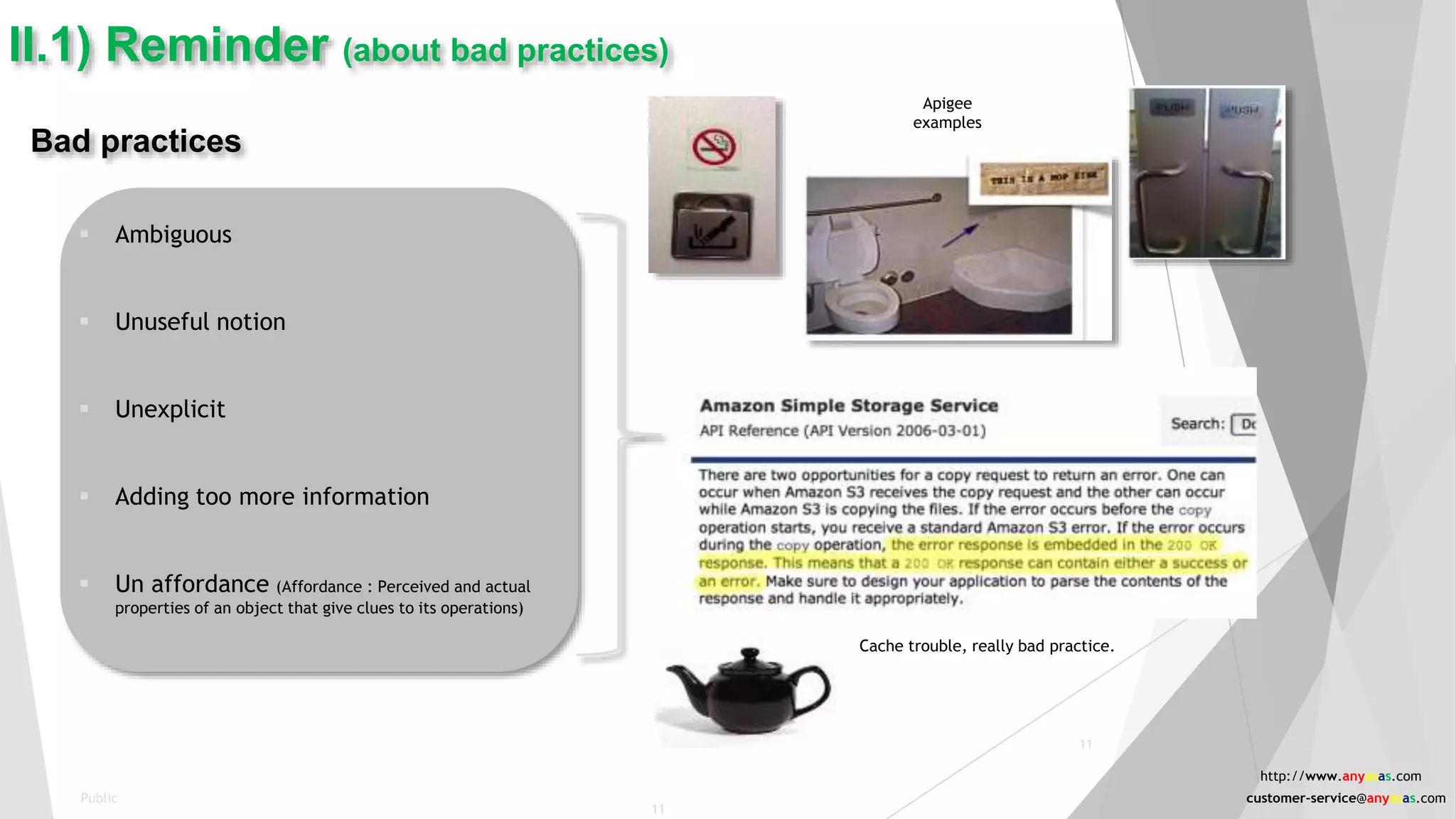
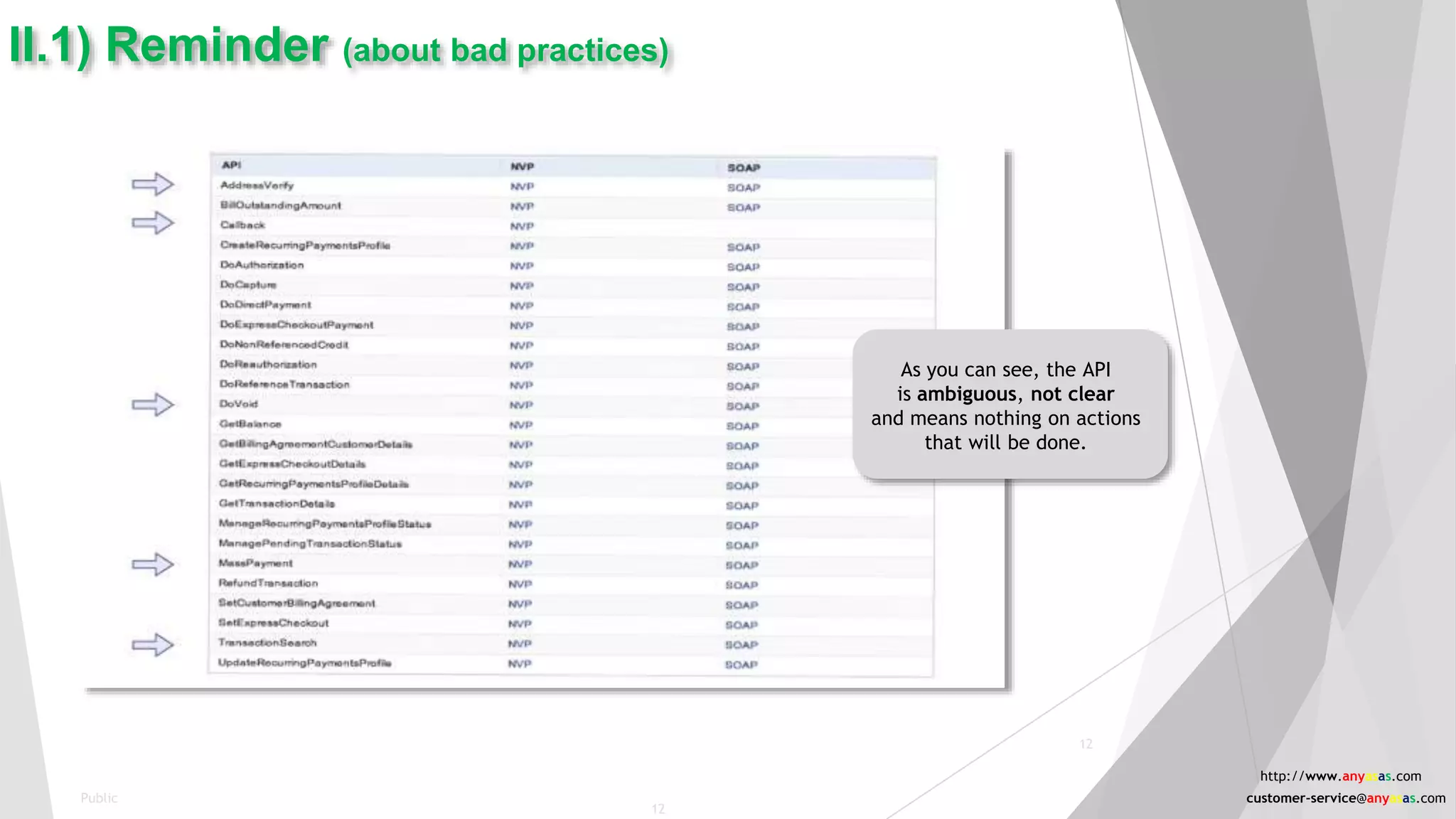

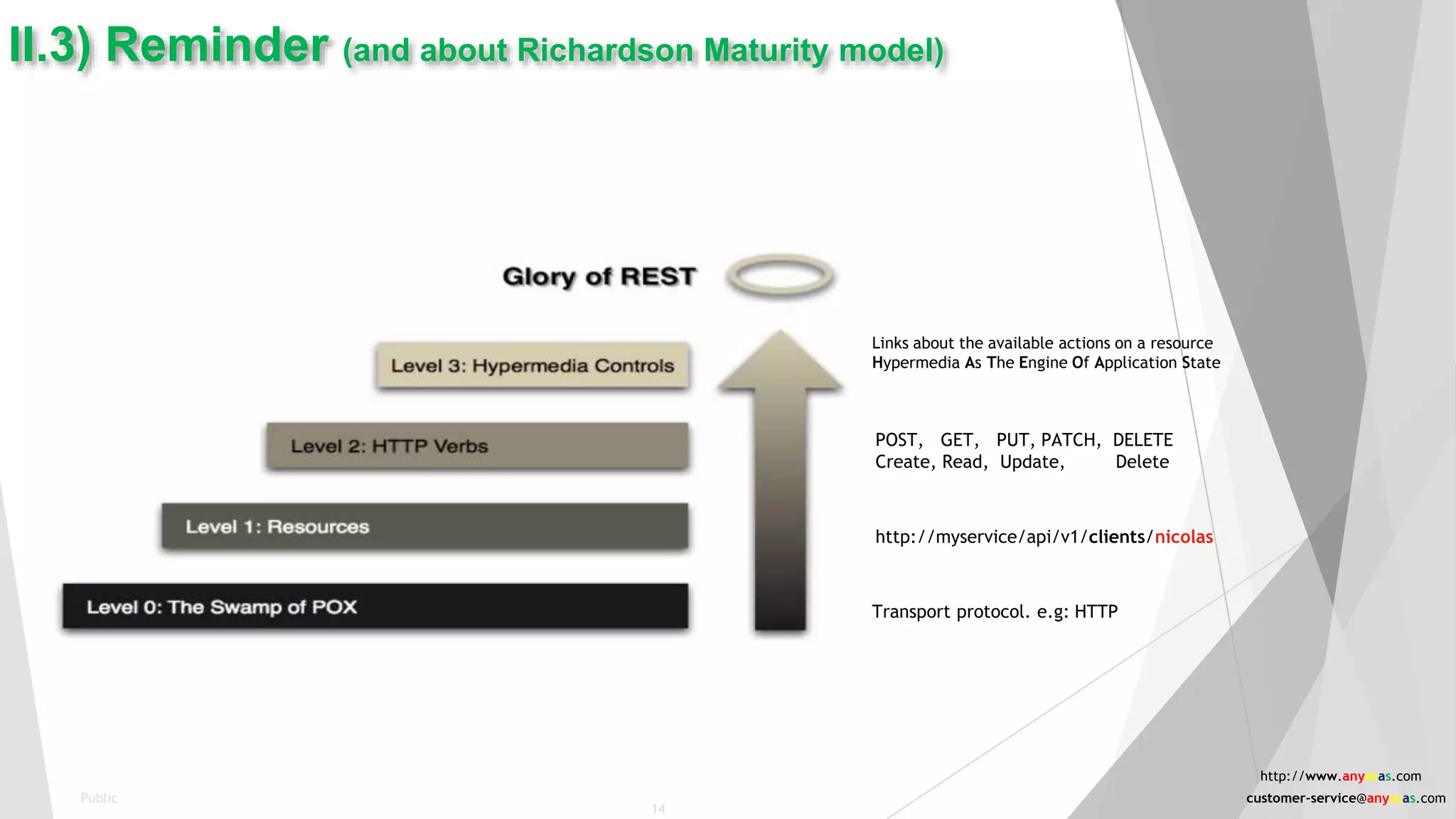
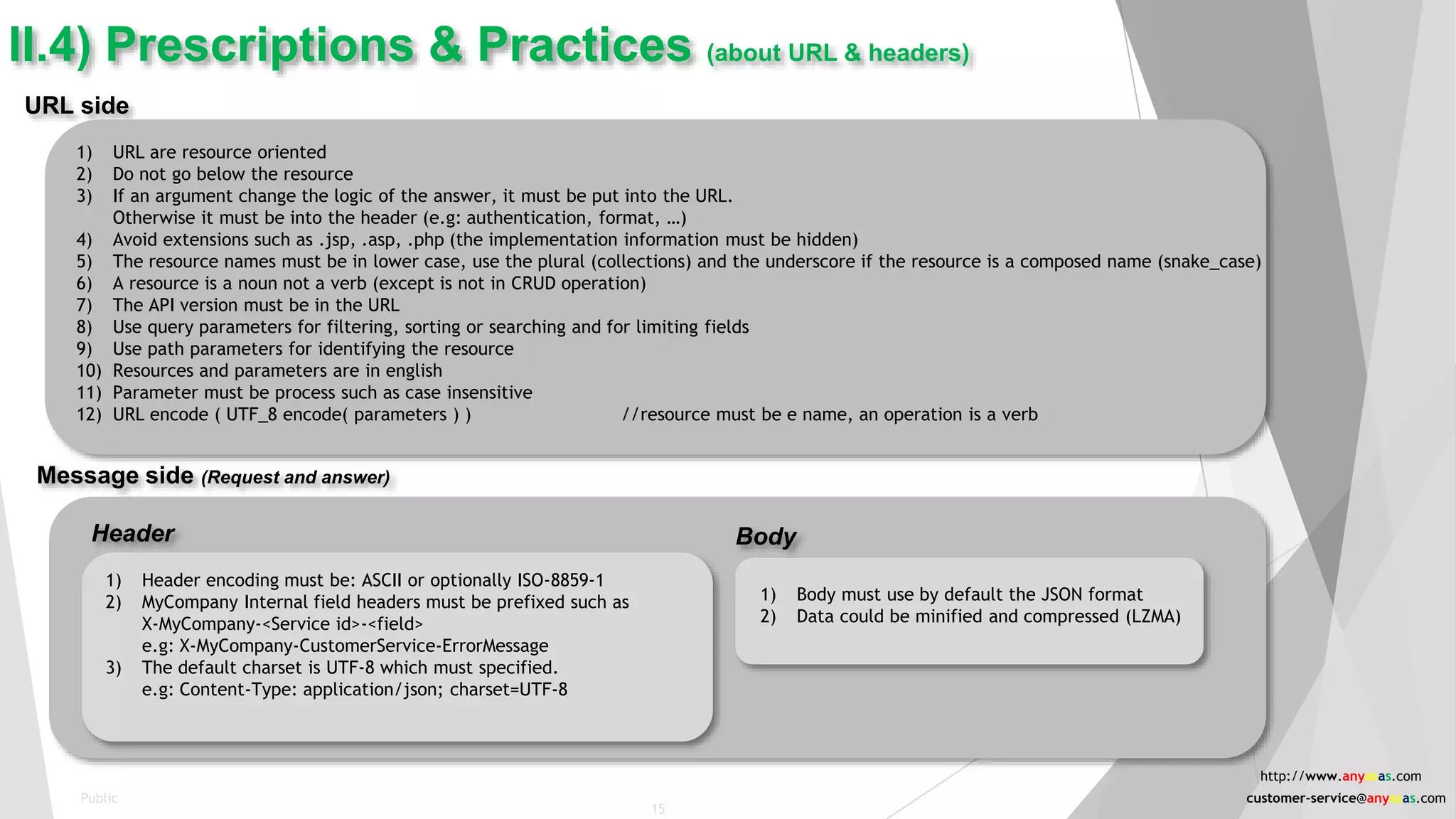
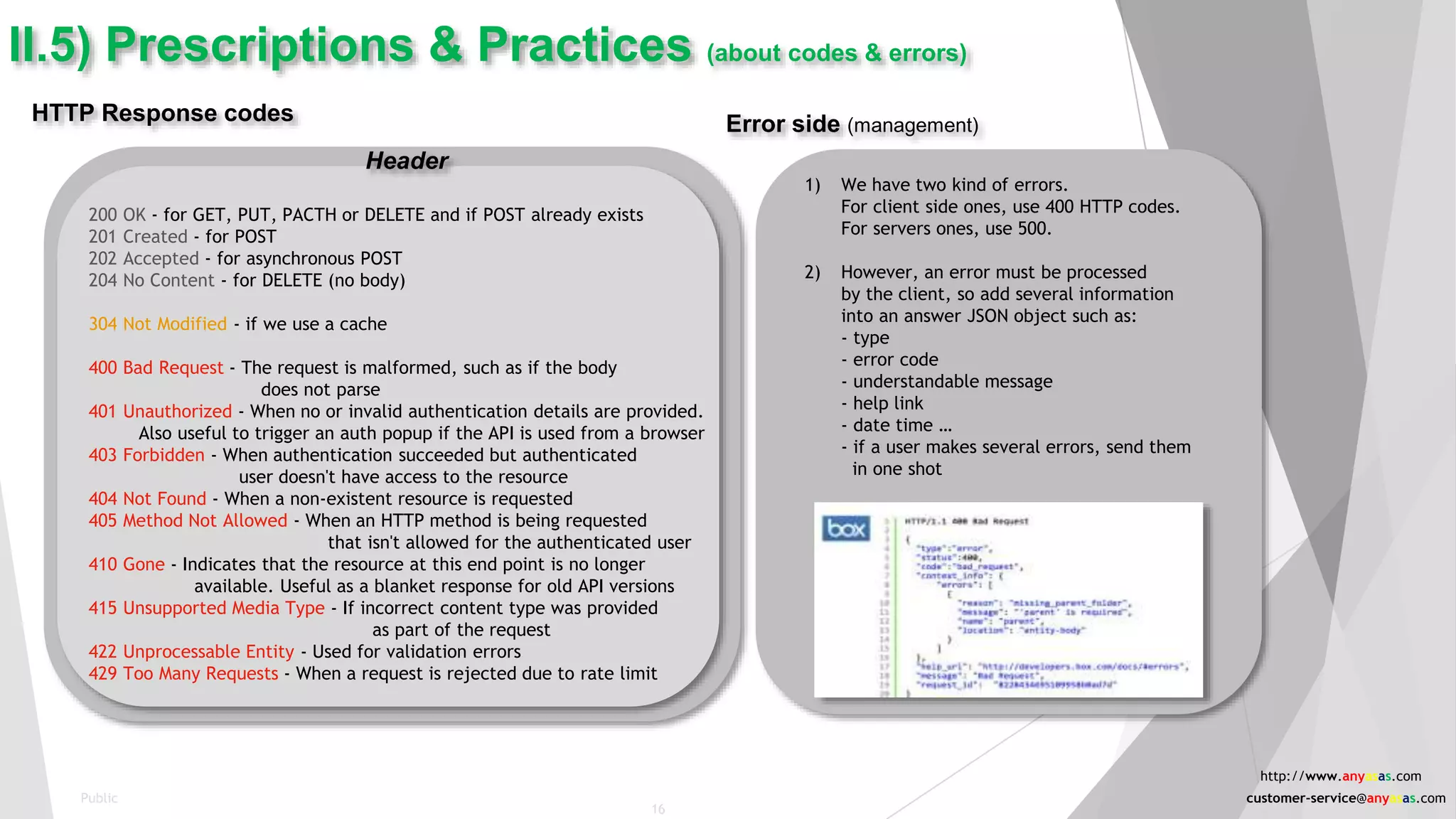
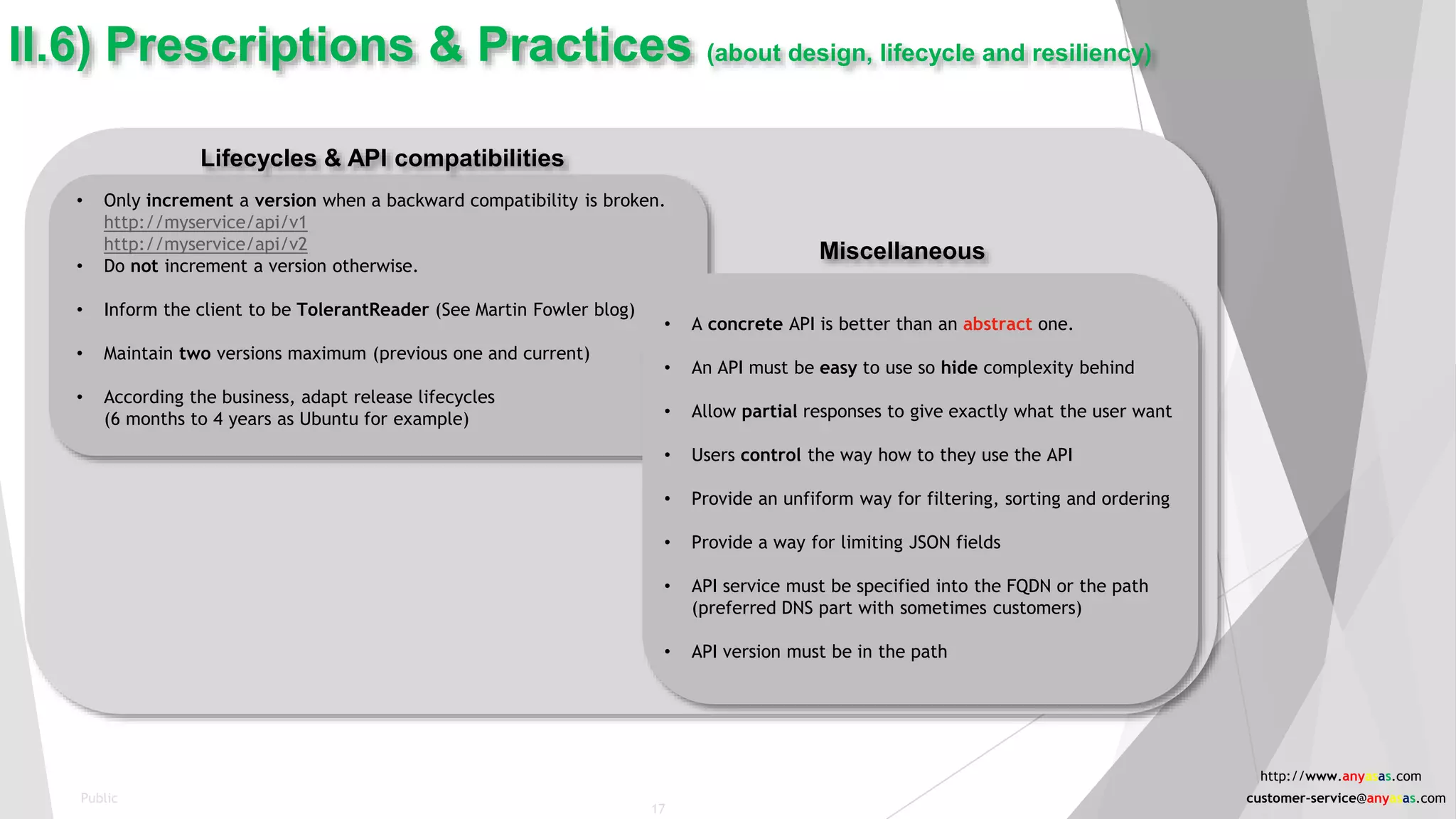
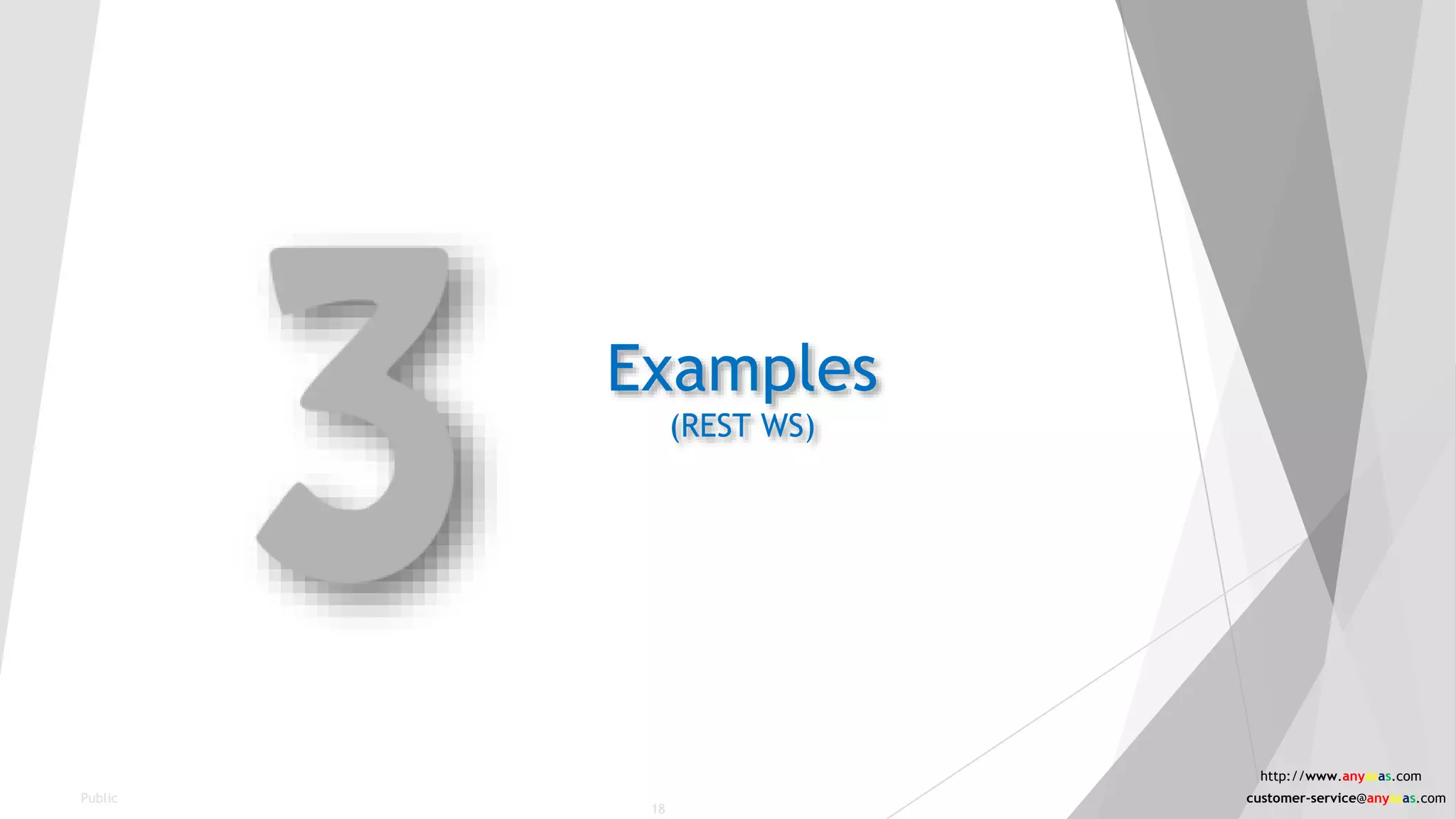
![III.1) Examples (GET)
HTTP Request
GET https://my_service/my_api/v1/my_objects/?fields=id,name,category,url&offset=0&limit=10
&sort=name&search=category%3Dcat
GET https://my_api.my_service/v1/my_objects/3
HTTP Answer
HTTP/1.0 200 OK
Content-Type: application/json; charset=utf-8
X-Anyasas-PetService-Codes: 200
X-Anyasas-PetService-Messages: Rules 3 used
X-Anyasas-PetService-Send-Count: 2
X-Anyasas-PetService-Total-Count: 1231
X-Anyasas-PetService-Rate-Limit: 1000000
X-Anyasas-PetService-Rate-Limit-Remaining: 64390
X-Anyasas-PetService-Rate-Limit-Reset: 36043
Header
[
{
"id" : "5278",
"name" : "Aquarelle",
"category" : "Cat",
"url" : "https://cats.com/aquarelle/"
},
{
"id" : "4390",
"name" : "Doggy",
"category" : "Dog",
"url" : "https://dogs.com/mylitlledoggy/"
}
]
Body
Header
READ
Better to put metadata into the JSON to avoid proxy
• Minification
• LZMA
Public
19
http://www.anyasas.com
customer-service@anyasas.com](https://image.slidesharecdn.com/cloudside-0000-apis-bestpractices-170823132058/75/Cloud-Side-REST-APIs-Best-practices-19-2048.jpg)
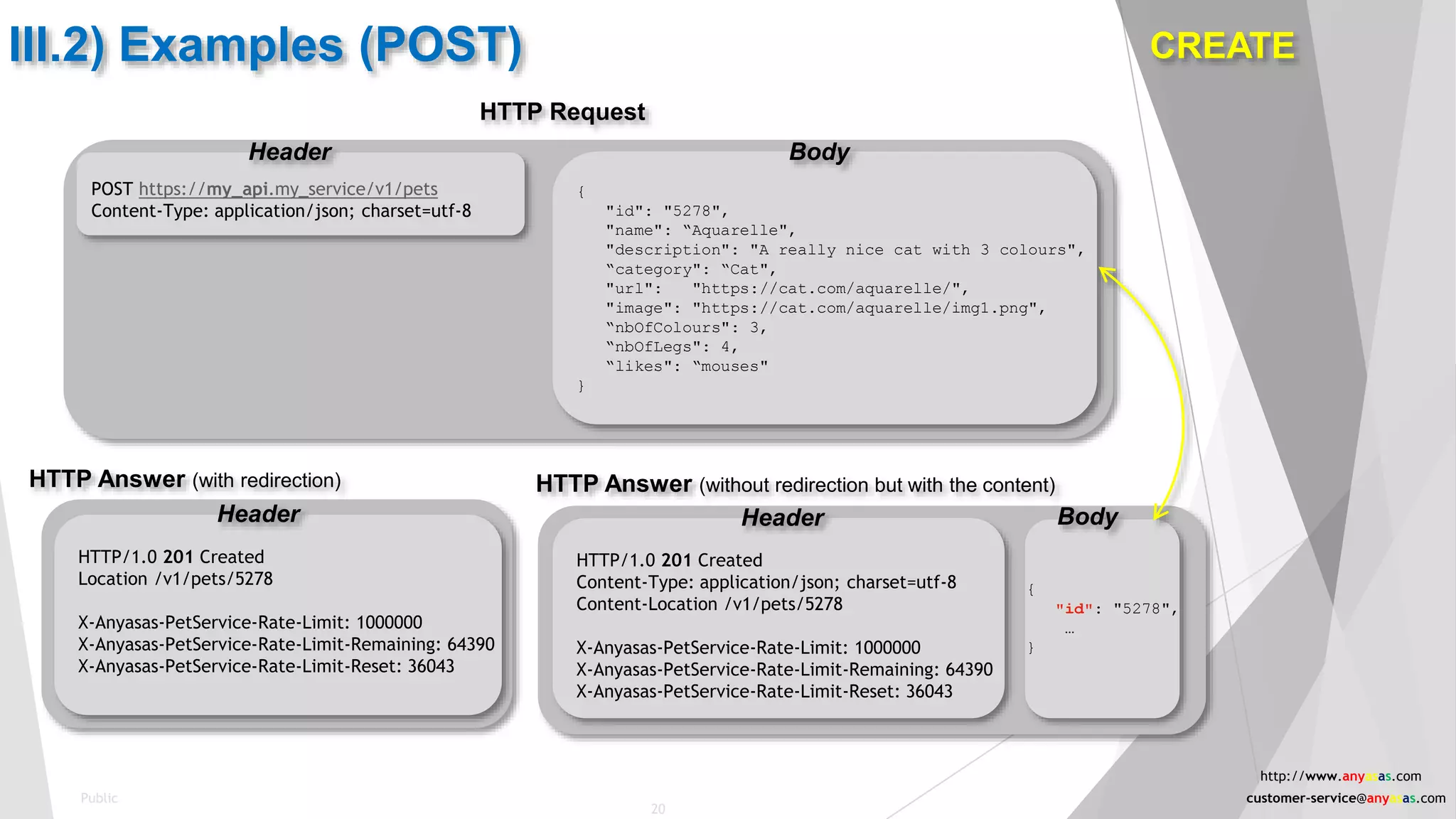
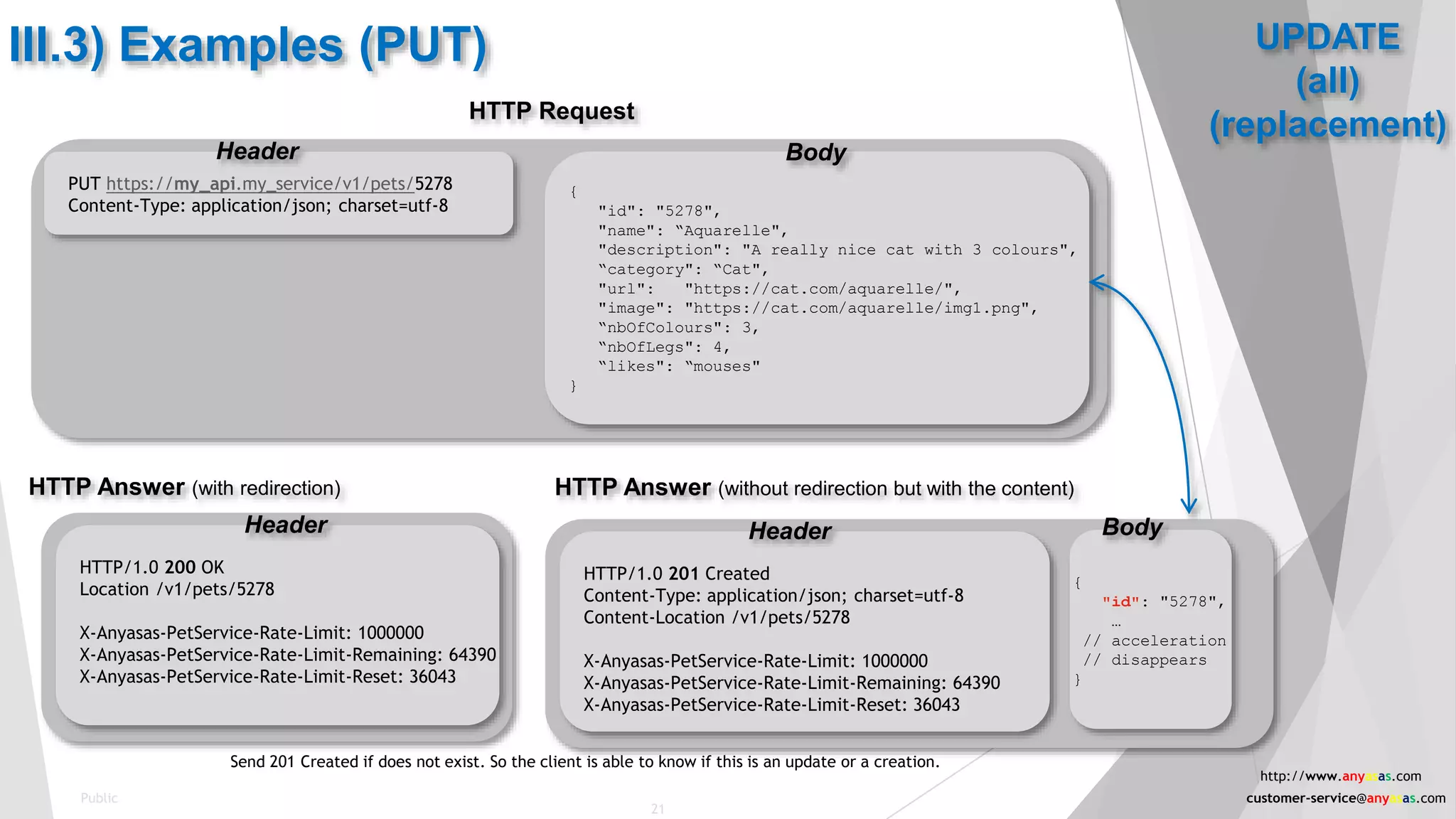
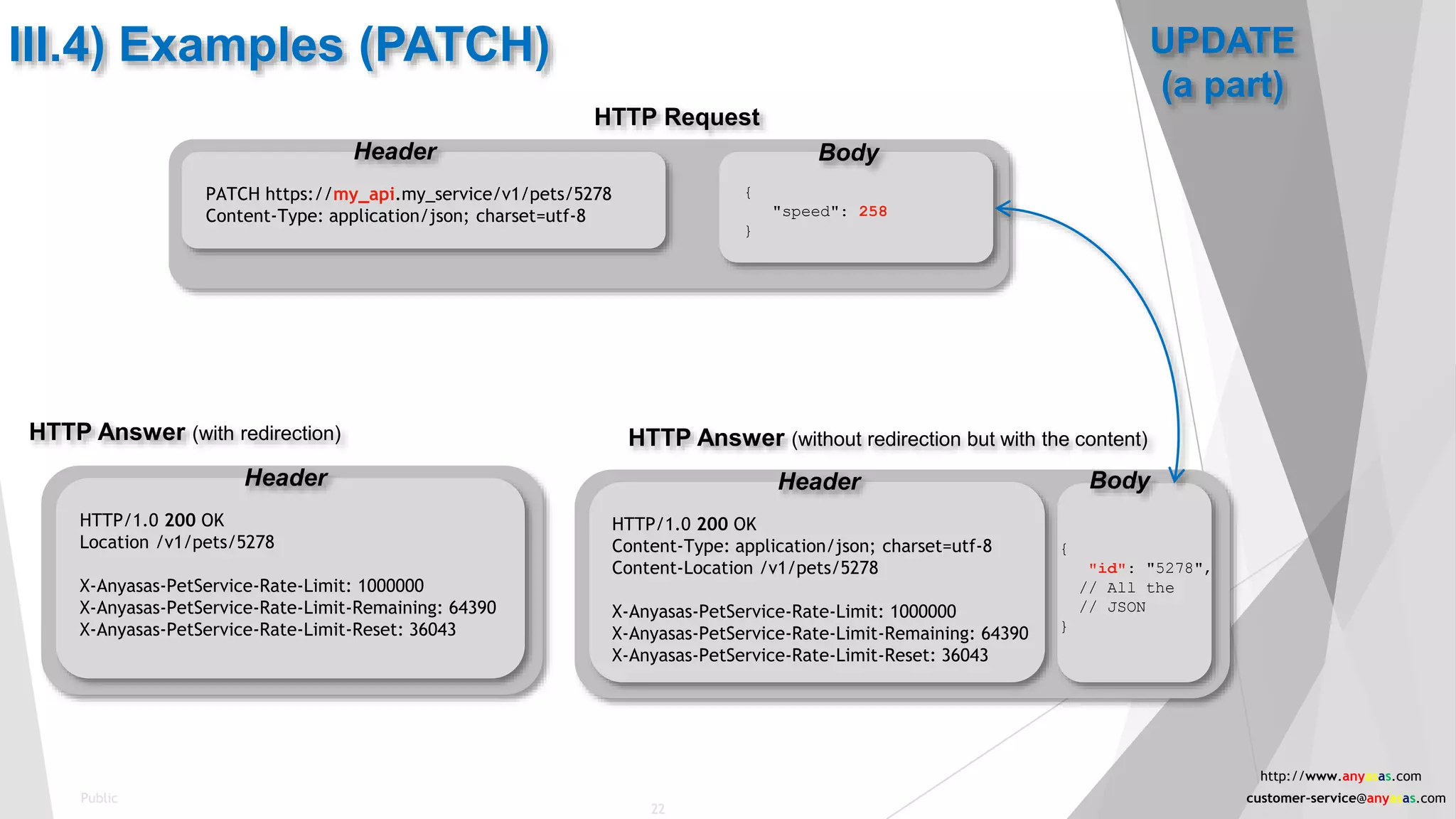
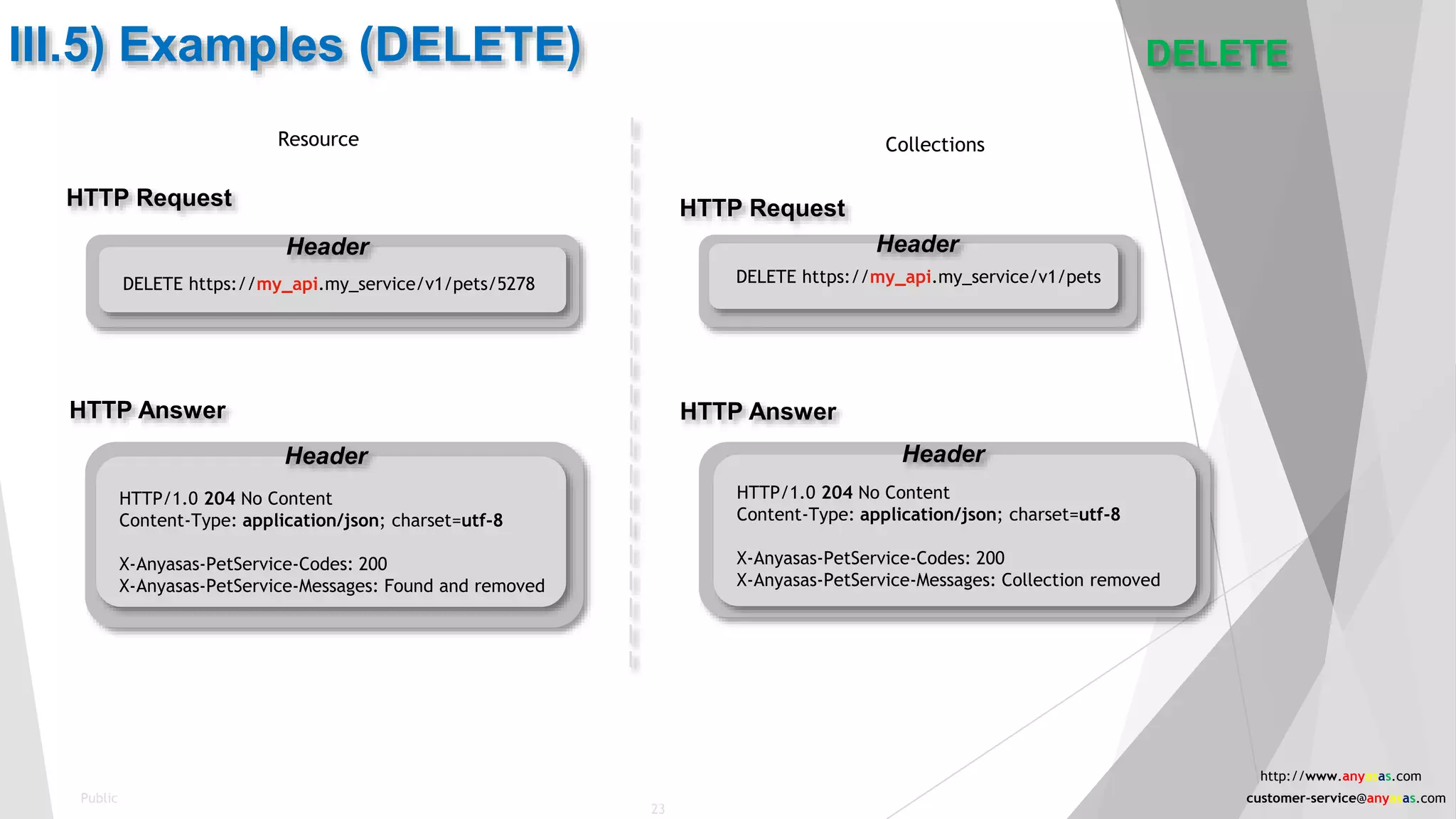
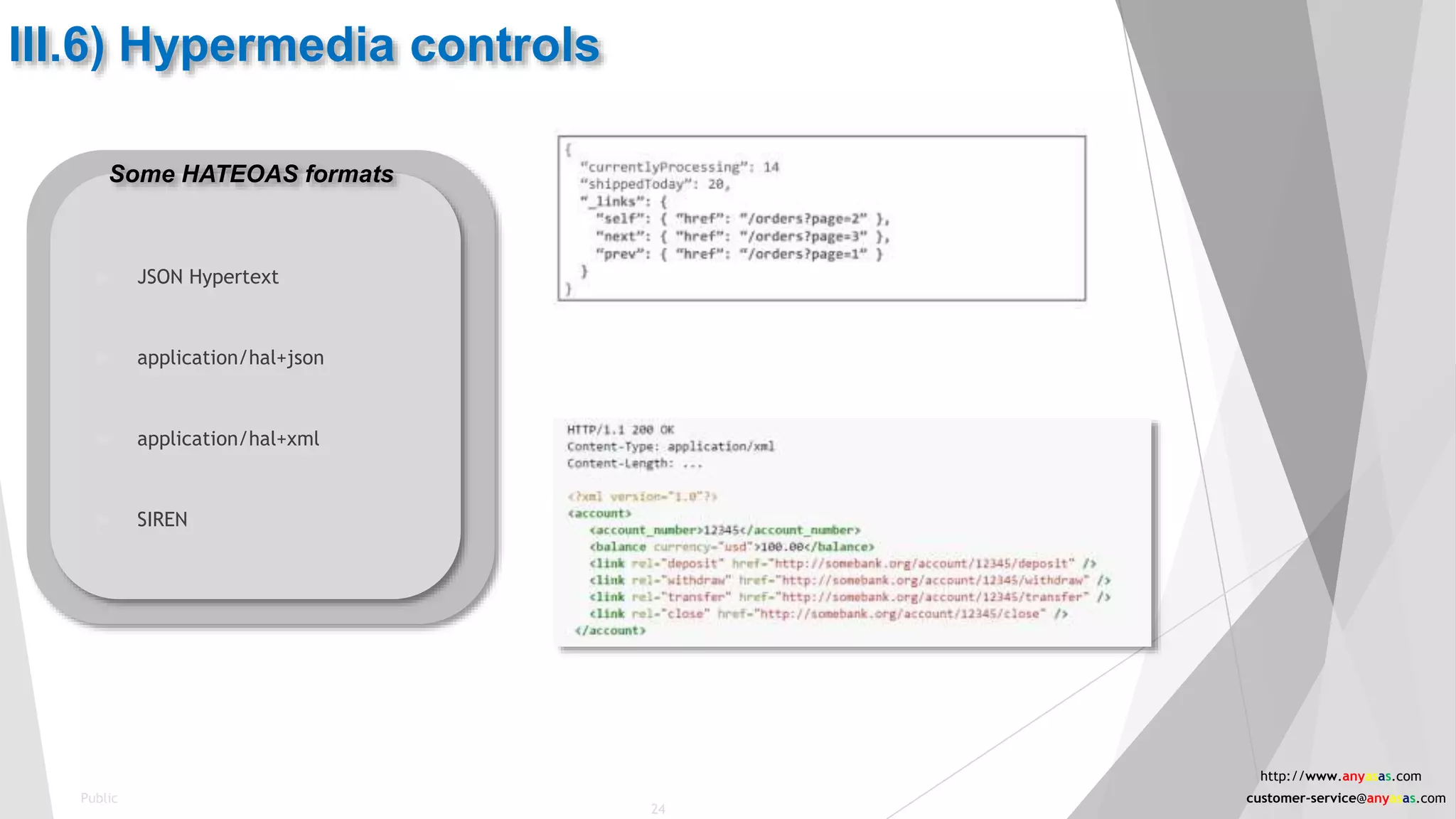
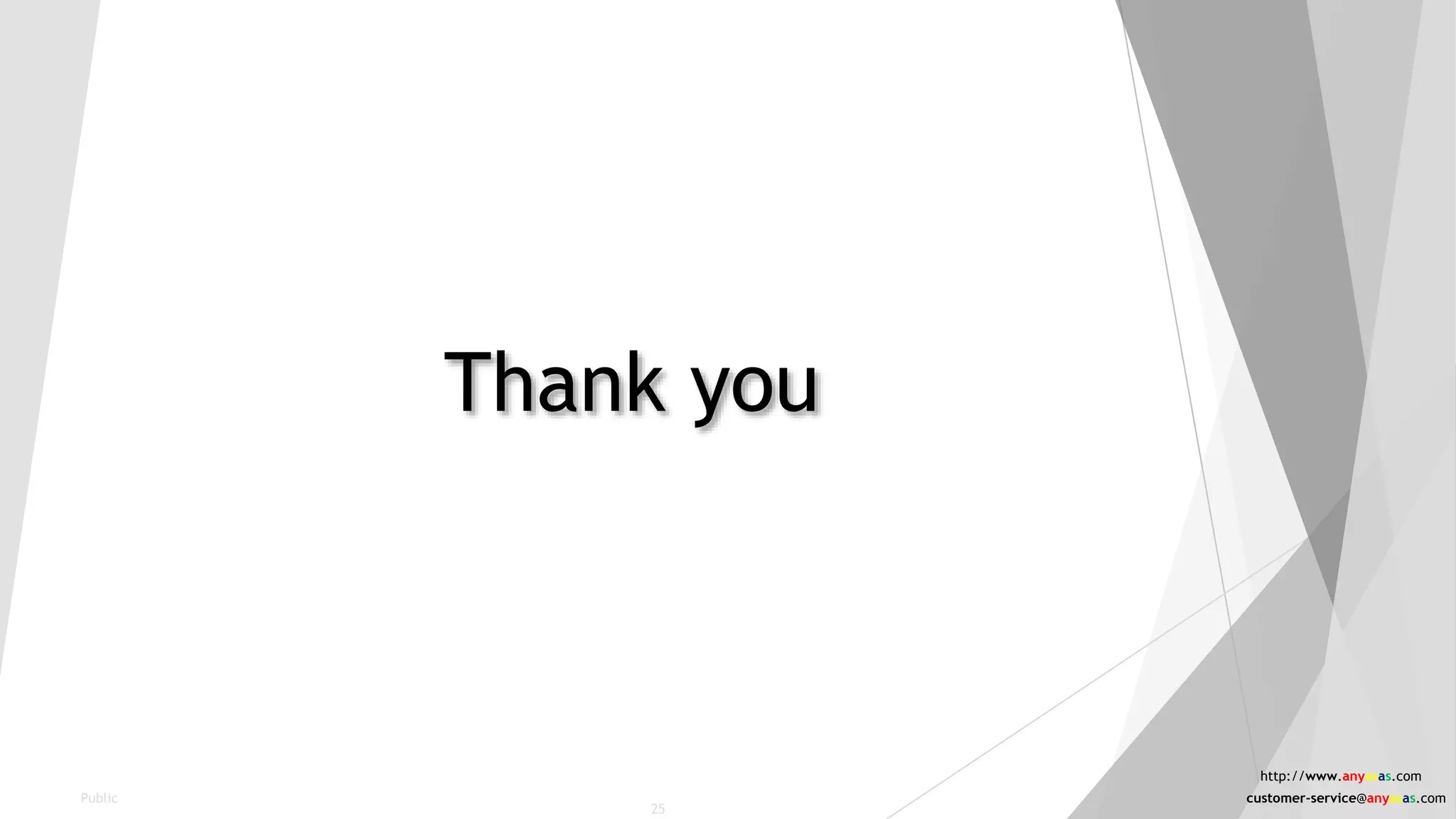
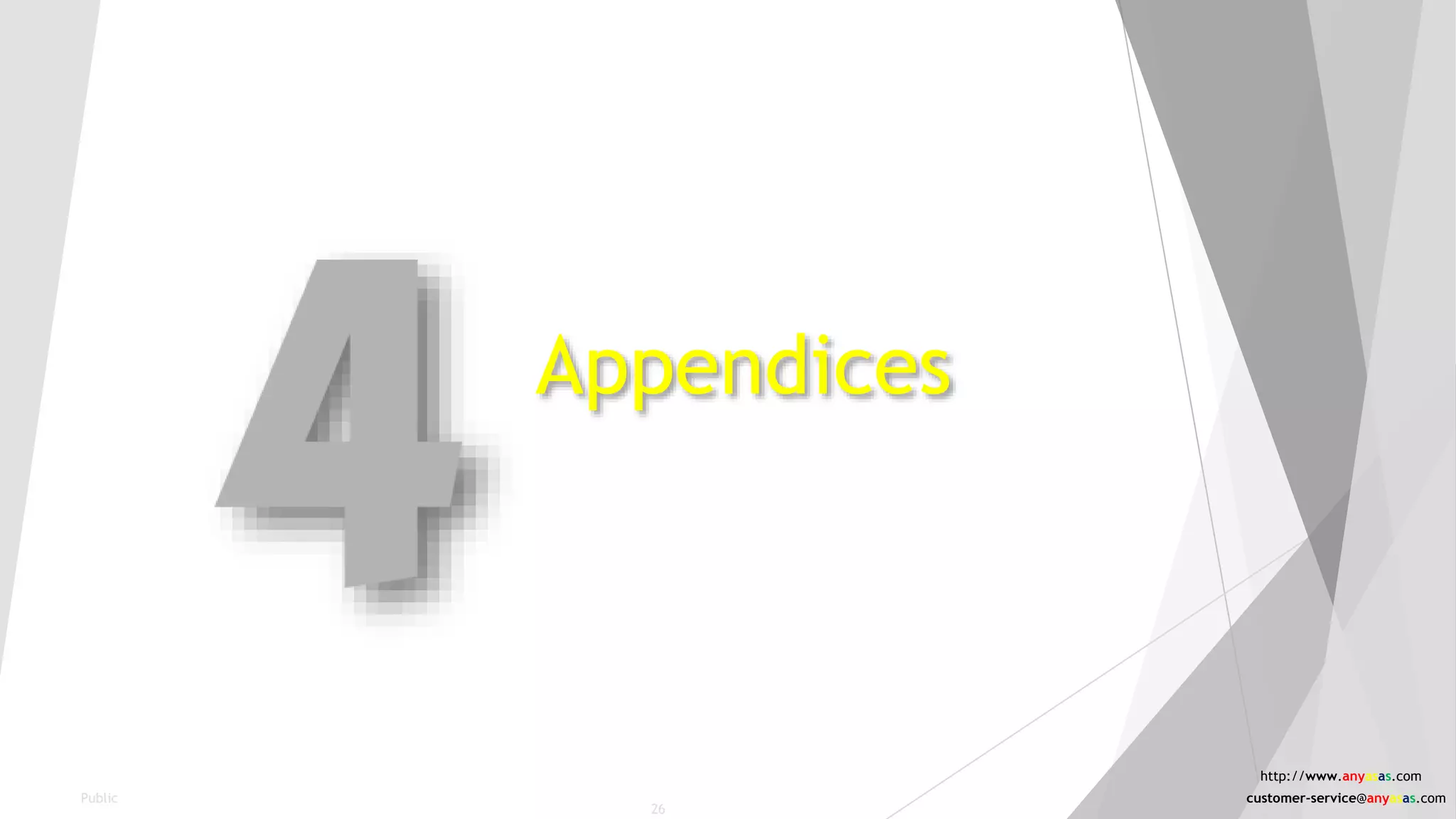
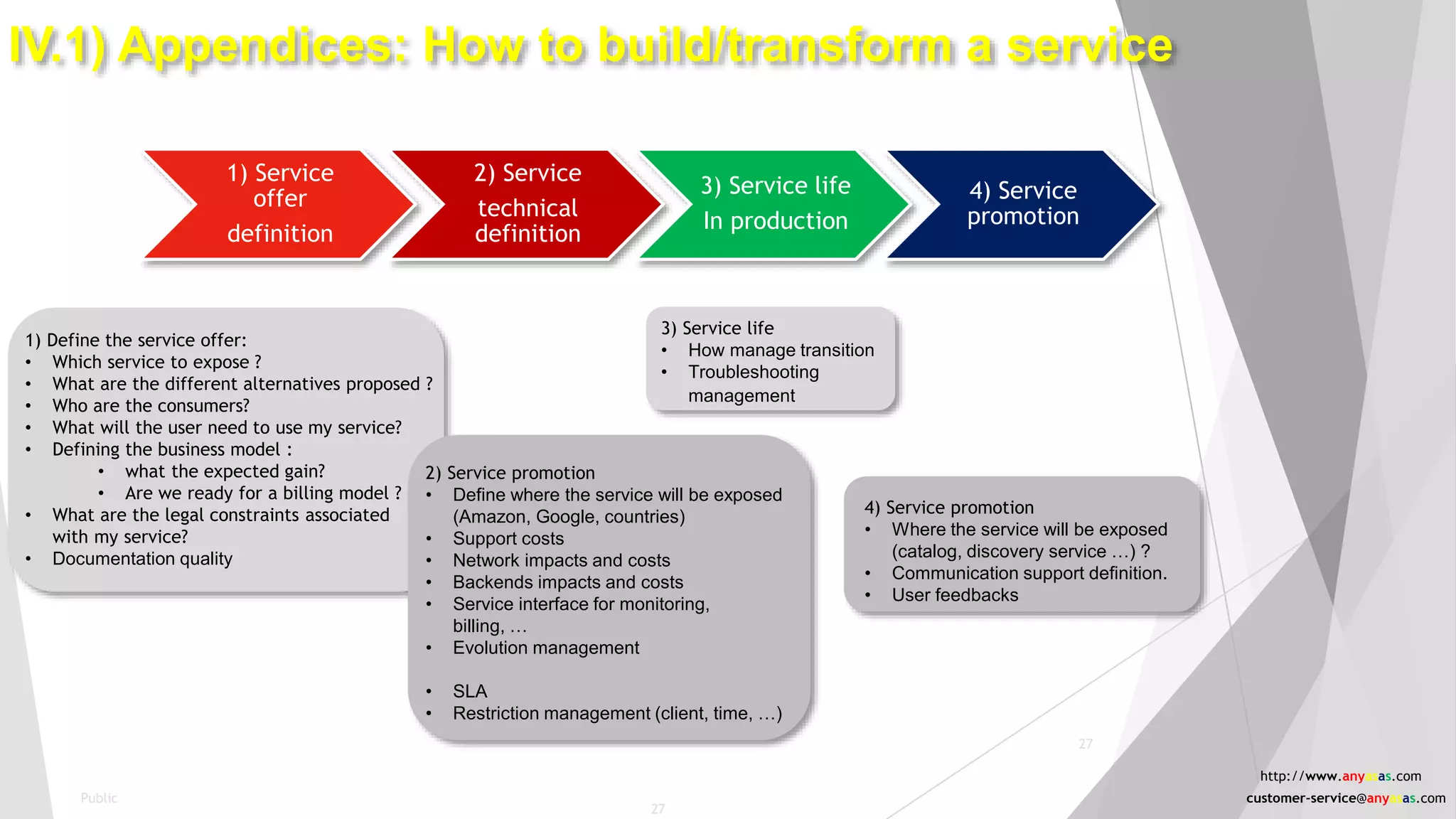
![IV.2) Appendices: API components
API gateway
API key
authentication
Traffic
management
Authorizations
(Access control)
[Format &
aggregation]
API management
API key
management
Security
policy
[Lifecycle
management]
Billing/Invoice
Monitoring
API store
Self-service
open API
Service catalogue
Third party
API
Internal developper
Bad practices, if use
for our services
Must be manage
at the service level for
each service portfolio
actor
http://www.anyasas.com
customer-service@anyasas.com
28
Public](https://image.slidesharecdn.com/cloudside-0000-apis-bestpractices-170823132058/75/Cloud-Side-REST-APIs-Best-practices-28-2048.jpg)
![Real Time
IV.3) Service analysis & lambda architecture
Collecting
phase
Storage
phase
Processing
phase
Viewing
phase
Service offering
phase
Distributed
Queuing
System
e.g: Kafka
Kind of
NoSQL
e.g: Elastic
search
Stateless
Service
WSRESTAPI
SQL or NoSQL
DBs.
E.g: MongoDB
Cassandra
Neo4J
Couchbase
Stateless
Service
WSRESTAPI
Logstash
Fluentd
Scribe
Ap. Flume
Splunk
Lumberjack
t.jmalloc
or
Yet
Another
Resource
Negotiation
Process
stream
Increme
nt
view
Real
time
view
Batch
view
Hadoop
All
data
HDFS
Map
[Combine]
Reduce
Merged
view
Kibana
Grapha
na
http://www.anyasas.com
customer-service@anyasas.com
29
Public](https://image.slidesharecdn.com/cloudside-0000-apis-bestpractices-170823132058/75/Cloud-Side-REST-APIs-Best-practices-29-2048.jpg)